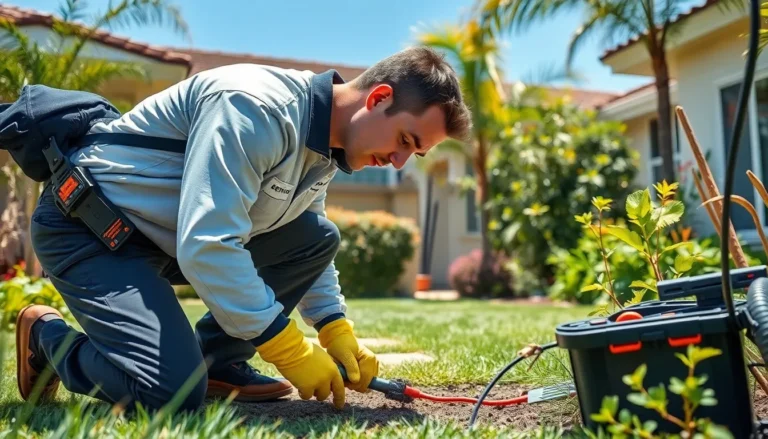Table of Contents
ToggleImagine walking into your home and having the lights adjust to your favorite hue while your coffee brews itself. Sounds like a scene from a sci-fi movie, right? Well, it’s not! DIY home automation is here to turn that dream into reality, and it’s easier than you think. You don’t need a PhD in robotics or a bottomless budget to make your home smart.
Overview of DIY Home Automation
DIY home automation simplifies daily tasks through user-friendly technology. Smart lighting, for example, adjusts brightness based on time or occupancy. Thermostats can optimize energy use by learning routines and preferences. These systems allow individuals to control appliances from anywhere using mobile devices.
Users can choose from various options like smart plugs and cameras, enhancing both convenience and security. Integration is often seamless, enabling communication between devices through a central hub. Many products on the market require minimal setup, making them accessible to novices.
Smart home solutions offer customization. Individuals can select specific features that meet their lifestyle needs. For instance, automated window shades can open or close based on sunlight intensity, improving comfort and energy efficiency. Voice assistants operate devices through simple voice commands, increasing hands-free convenience.
Security is another critical benefit of DIY home automation. Homeowners can monitor their spaces in real-time with security cameras and motion sensors. Alerts notify users of unusual activity, promoting peace of mind.
Overall, DIY home automation builds a connected environment that enhances everyday living. The tools available support a range of functionalities aimed at improving comfort, efficiency, and security. With the right setup, anyone can create a smart home tailored to their unique preferences and routines.
Benefits of DIY Home Automation

DIY home automation offers numerous advantages that enhance daily living experiences. Key benefits include cost-effectiveness and customization options.
Cost Effectiveness
Implementing DIY home automation often proves to be more affordable than hiring professionals. Costs associated with professional installation can escalate rapidly. Many DIY options allow homeowners to invest only in the devices they require. Savings grow further as smart technologies optimize energy usage, reducing utility bills. According to the U.S. Department of Energy, smart thermostats can save homeowners an average of 10-12 percent on heating and cooling costs annually. By focusing on personal needs and budget, individuals can create a smart home tailored to their financial situation.
Customization Options
Tailoring a smart home to fit personal preferences becomes easy with DIY solutions. Homeowners can choose from various devices that suit their lifestyle, such as customizable lighting that adapts to different activities. Control over automation allows for unique setups, like setting schedules or creating scenes for specific occasions. Individuals can integrate voice assistants for hands-free management of devices and environments. Flexibility in selecting products enables users to enhance their home based on individual routines and habits. Overall, customization empowers users to craft a truly personalized smart home experience.
Essential Components for DIY Home Automation
Effective DIY home automation relies on several key components that enhance convenience, comfort, and energy efficiency.
Smart Hubs
Smart hubs serve as the central command unit for various devices. They allow seamless communication between different smart products, facilitating unified control. For instance, systems like Samsung SmartThings or Amazon Echo provide compatibility with numerous devices. Users can monitor and manage appliances through a single interface, ensuring streamlined operation. Customization options enhance the user experience, enabling tailored setups that meet specific preferences. Integrating devices with a smart hub simplifies complex automation tasks and provides a user-friendly approach.
Sensors and Cameras
Sensors and cameras play a crucial role in enhancing home security and automation capabilities. Motion sensors detect activity and can trigger alerts or automate lighting. For instance, outdoor motion detectors can illuminate pathways when someone approaches. Similarly, security cameras enable real-time monitoring, capturing activity on property. Users can receive notifications for unusual movements, improving safety. Integration with a smart hub allows for remote access and monitoring via mobile devices. This feature empowers homeowners to maintain awareness of their surroundings.
Smart Lighting
Smart lighting systems significantly improve energy efficiency and enhance ambiance. Automated LED bulbs can adjust brightness based on time, occupancy, or personal preferences. Users can set schedules to turn lights on and off, contributing to energy savings. Voice-controlled options make operation effortless, allowing for hands-free management. Smart lighting can also sync with other devices, creating customized scenes for specific activities. For example, movie mode may dim lights automatically during film time. These features foster a comfortable atmosphere and promote efficient energy use.
Getting Started with DIY Home Automation
Setting up a DIY home automation system involves careful planning and the right tools. This ensures a smoother, more efficient setup process for users.
Planning Your System
Assessing individual needs is essential before diving into home automation. Identifying areas for improvement, like lighting or security, helps tailor the system effectively. Expected outcomes should also be defined, such as enhanced convenience or reduced energy costs. Furthermore, creating a budget is crucial to managing expenses without overspending. A structured layout for device placement increases efficiency in the long run, ensuring optimal coverage and functionality throughout the home.
Recommended Tools and Materials
Stocking up on essential tools simplifies the DIY process. Smart hubs represent a foundational component, enabling device integration and centralized control. Sensors, like motion detectors and door/window sensors, provide added security and automation. Smart lighting systems create an ambiance and enhance energy efficiency. Additionally, smart plugs allow control of non-smart appliances, broadening the automation capabilities. High-quality cables ensure reliable connections between devices and protect against signal loss. By gathering these tools before starting, homeowners set themselves up for a successful DIY home automation experience.
Popular DIY Home Automation Projects
DIY home automation projects enhance convenience and security while providing cost-effective solutions for homeowners. These projects offer various options to tailor the smart home experience to individual preferences.
Smart Lighting Control
Smart lighting control systems transform how individuals manage their home’s illumination. Users can install smart bulbs that connect directly to a smartphone app, allowing for remote adjustments of brightness and color. These systems often include scheduling features, enabling homeowners to automate lighting based on time or occupancy. Voice-activated assistants also integrate seamlessly with smart lighting, providing hands-free operation. For example, saying “turn off the living room lights” makes controlling lights easier. Energy efficiency improves significantly as smart lighting adapts to the household’s routines, helping to lower electricity bills.
Home Security Systems
Home security systems offer peace of mind through enhanced surveillance and monitoring. DIY options include using smart cameras that provide real-time video feeds accessible via mobile devices. Motion sensors can be set up to trigger alerts and notifications, keeping homeowners informed of unusual activity. Additionally, solutions like smart doorbells allow individuals to see and communicate with visitors remotely. Integration with smart hubs enhances overall system functionality, enabling centralized control. With the right setup, home security becomes proactive, deterring potential intruders and ensuring safety for all residents.
Embracing DIY home automation opens up a world of possibilities for enhancing daily life. It empowers individuals to create a personalized living space that aligns with their routines and preferences. With user-friendly technology and affordable solutions, transforming a home into a smart haven is more achievable than ever.
The ability to control devices remotely and automate tasks not only boosts convenience but also enhances security and energy efficiency. As technology continues to evolve, the options for DIY projects will only expand, allowing homeowners to innovate and customize their environments further. By taking the plunge into DIY home automation, anyone can enjoy a smarter, more connected lifestyle.







